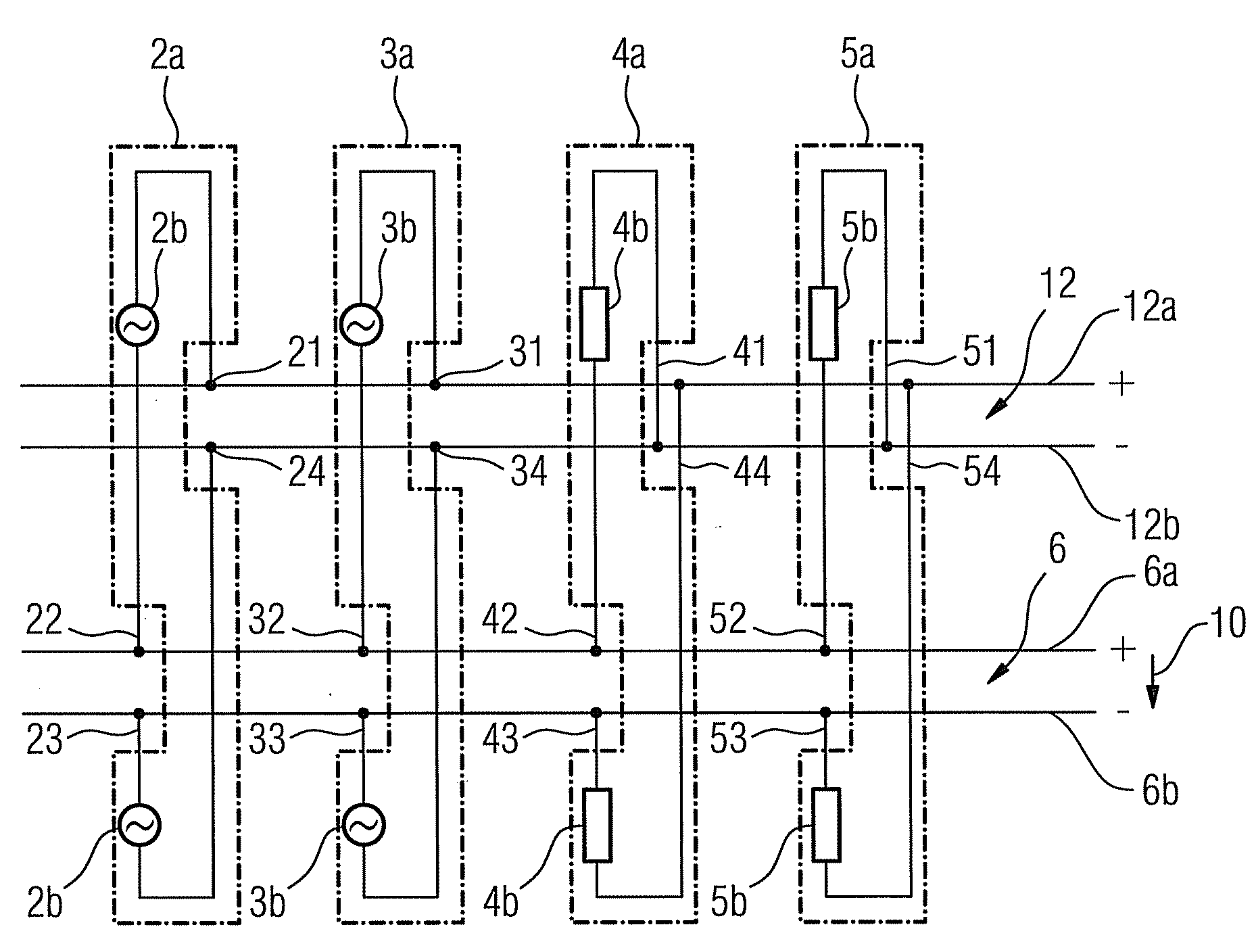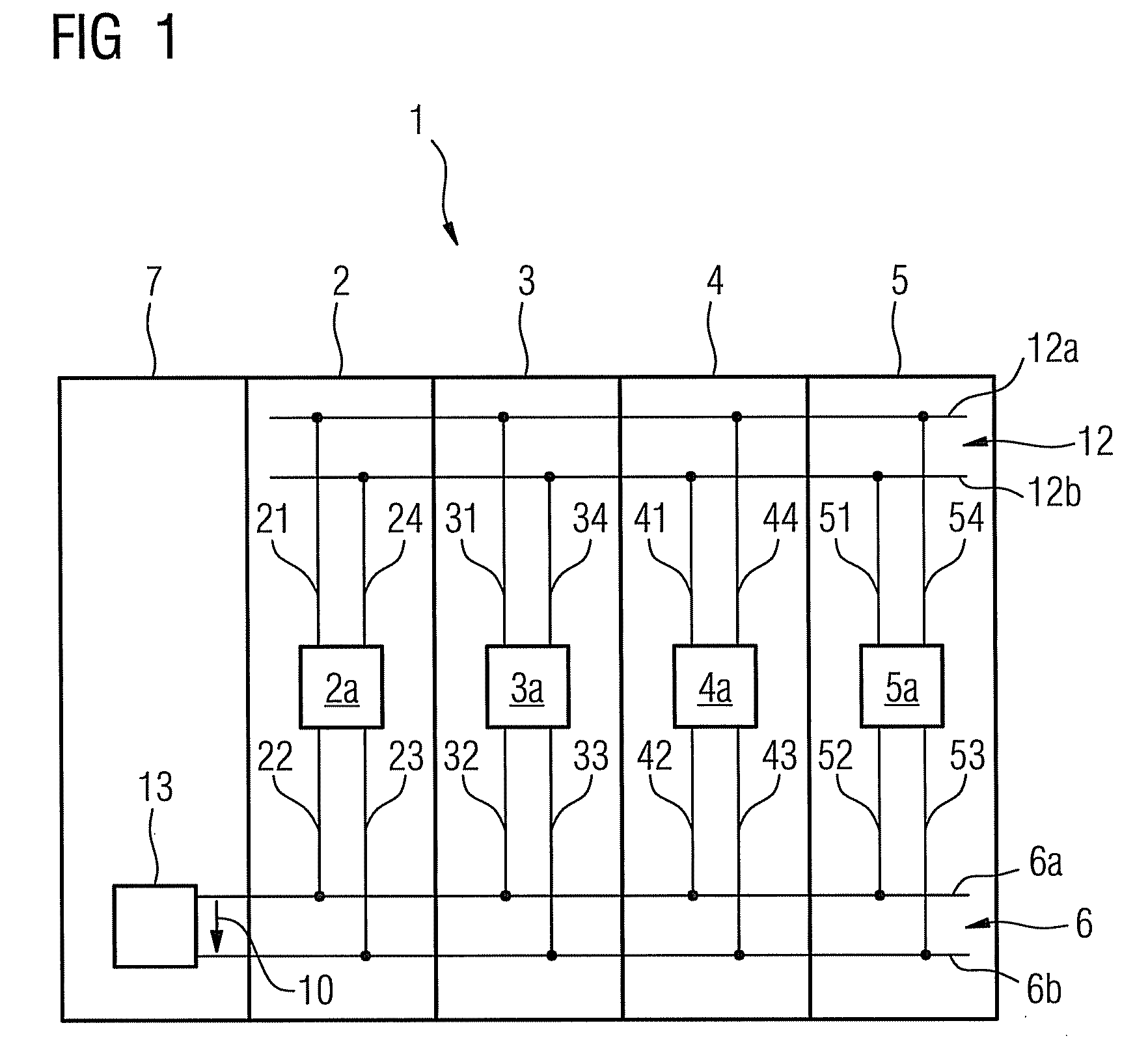Modular Electrical System and Method for its Operation
- Summary
- Abstract
- Description
- Claims
- Application Information
AI Technical Summary
Benefits of technology
Problems solved by technology
Method used
Image
Examples
Embodiment Construction
[0029]FIG. 1 shows a modular electrical system 1. In this arrangement the system 1 has a first source module 2, a second source module 3, a first sink module 4 and a second sink module 5 as pluggable subassemblies on a backplane structure, which in combination with a primary module 7 form an automation system.
[0030]A two-wire line 6 having a first conductor 6a and a second conductor 6b, embodied as a two-wire bus, runs through the entire automation system, starting from the primary module 7 and continuing via the modules 2, . . . ,5. In order to connect to the two-wire line the first source module 2 has a first source identification means 2a and the second source module 3 has a second source identification means 3a. The source identification means 2a,3a of the source modules 2,3 represent the power that is available by way of the source modules 2,3. A first sink identification means 4a that is available in the first sink module 4 and a second sink identification means 5a that is ava...
PUM
 Login to View More
Login to View More Abstract
Description
Claims
Application Information
 Login to View More
Login to View More - R&D
- Intellectual Property
- Life Sciences
- Materials
- Tech Scout
- Unparalleled Data Quality
- Higher Quality Content
- 60% Fewer Hallucinations
Browse by: Latest US Patents, China's latest patents, Technical Efficacy Thesaurus, Application Domain, Technology Topic, Popular Technical Reports.
© 2025 PatSnap. All rights reserved.Legal|Privacy policy|Modern Slavery Act Transparency Statement|Sitemap|About US| Contact US: help@patsnap.com



